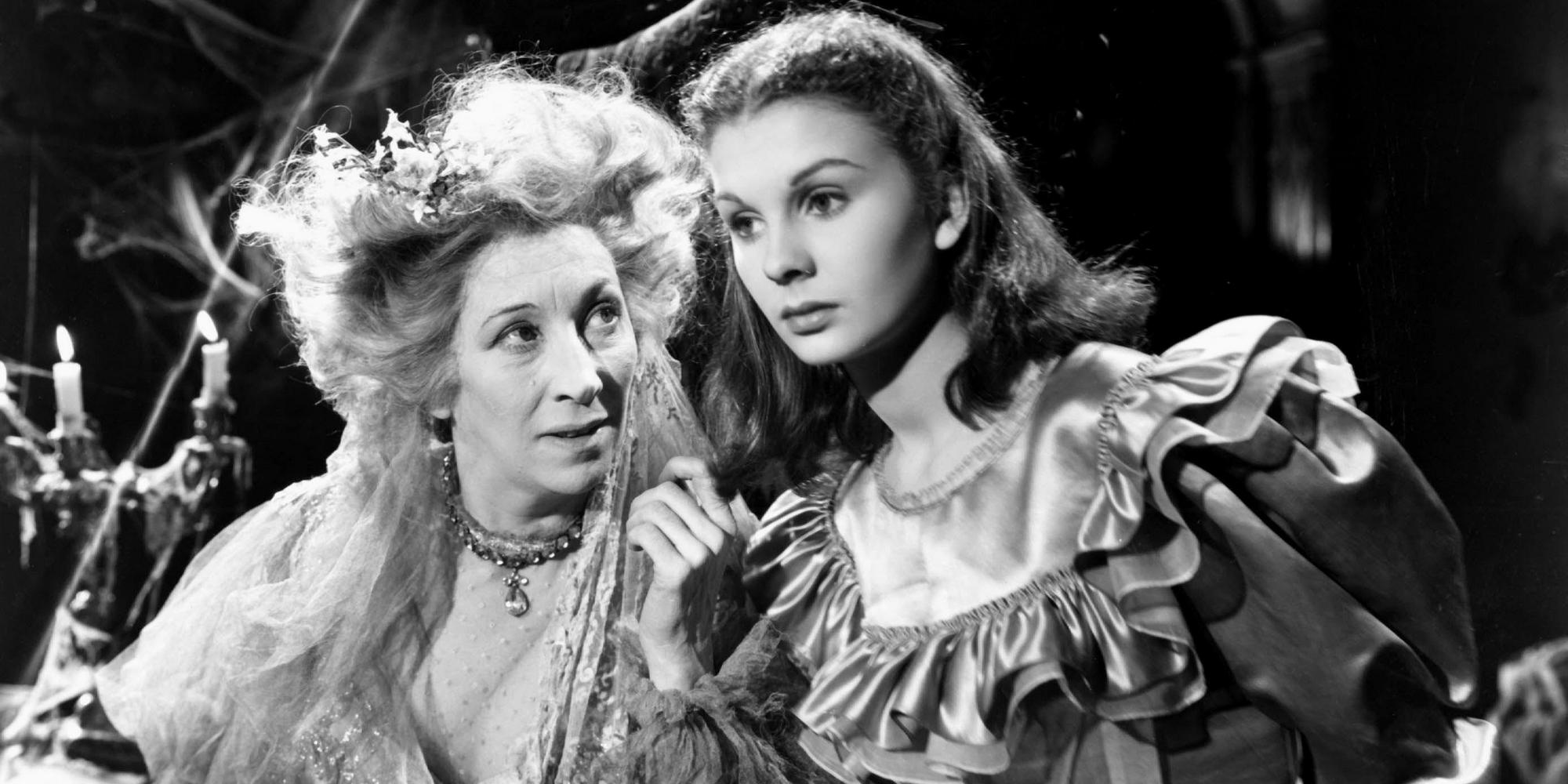
Filming Great Expectations: Part 1
Part One: ‘We made everything larger than life…’
This year, the arrival of spring will be accompanied by what promises from the trailer to be a radical reimagining of Dicken’s immortal coming of age story Great Expectations, written by Peaky Blinders creator Stephen Knight. This will be Knight’s second Dickens screenplay, following A Christmas Carol (2019), a dark reinterpretation of another familiar classic exploring themes that fans of Peaky Blinders and Taboo will instantly recognise: class, race, wealth, poverty, and crime, as well as sexuality and trauma – Dickensian subjects all. From his choice of historical and literary material, it is clear that Knight is making a lot of connections between Dickens’ century and our own, another bleak era of social inequality and unregulated turbo capitalism. With Great Expectations, Knight reunites with his regular co-producers Ridley Scott and Tom Hardy, and like A Christmas Carol, the series will again be a joint FX/BBC production. Fionn Whitehead, who starred in Dunkirk and Black Mirror: Bandersnatch, will play the adult Pip; Shalom Brune-Franklin (Our Girl, The State, Line of Duty) is Estella; Ashley Thomas – AKA the rapper Bashy – is Jaggers; Johnny Harris (who was also in A Christmas Carol) is Magwitch, and Olivia Coleman is the latest Miss Havisham, following a long line of over-the-top portrayals all the way back to the definitive performance by Martita Hunt in David Lean’s Oscar-winning film version of 1946.
Great Expectations is one of Dickens’ most adapted novels, with the number of film, TV, and stage versions about equal to those of Oliver Twist, both well into double figures (even the beloved David Copperfield does not come close). Only A Christmas Carol has been adapted more times. It is a familiar Dickensian fable in which what notionally appears to be a rags to riches story becomes a journey of humility and self-discovery through adversity, self-sacrifice, honest labour, and personal growth. Like David Copperfield, which it structurally resembles, being another first-person account, Great Expectations is a Bildungsroman, a ‘novel of formation’ dramatising the emotional and moral growth of the protagonist, Pip, from child to adult. A major part of the story’s enduring appeal is probably because this is a journey we all undertake; regardless of the individual circumstances, the theme is universal and monomythic, as are all the best stories. Then there’s the possibility of true moral regeneration that the story offers, as well as that pang of unrequited love that all of us have at one time felt. Or perhaps it’s the disturbingly sensual gothic charge that accompanies successive Miss Havishams, like the Wicked Queen in Snow White. The novel is also a fusion of several popular genres, combing aspects of the Newgate novel (prototype crime fiction), and the gothic with social satire and even comedy. As Dickens was writing to entertain (and therefore sell) as well as edify, the novel is also full of larger than life characters, all of whom are gifts for actors, scriptwriters, and directors.
Thus does Great Expectations continue to draw filmmakers and audiences to it like moths to a flame. It is one of those transcendent literary classics that we apparently never tire of seeing updated and redone, always acting surprised at the ending. Paramount first took it on in 1917, in a 50-minute silent version of which no prints now exist. Jack Pickford, the younger brother of Mary, played Pip. Anders Wilhelm Sandberg directed another silent version in Denmark in 1922, one of a quartet of Dickens pictures he made between 1921 and 1924, the others being Our Mutual Friend, David Copperfield, and Little Dorrit. The first sound version of the novel was directed by Stuart Armstrong Walker for Universal in 1934. He would follow it in 1935 with The Mystery of Edwin Drood but is probably most remembered now by film historians as the director of the first Hollywood werewolf movie, Werewolf of London, starring Henry Hull, who also played Abel Magwitch. The film starred Phillips Holmes as Pip, Jane Wyatt as Estella, and Florence Reed as Miss Havisham. The British actor Francis L. Sullivan played Jaggers, a role he would reprise in David Lean’s film twelve years later. Unlike MGM’s David Copperfield (1935), directed by George Cukor, Universal’s Great Expectations was neither a critical nor commercial success, while Miss Havisham was a profound disappointment. Denuded of her trademark bridal gown, she was downgraded from probably mad to merely eccentric, and no longer the primary architect of Pip’s fraught attraction to Estella. She doesn’t even die in a fire.
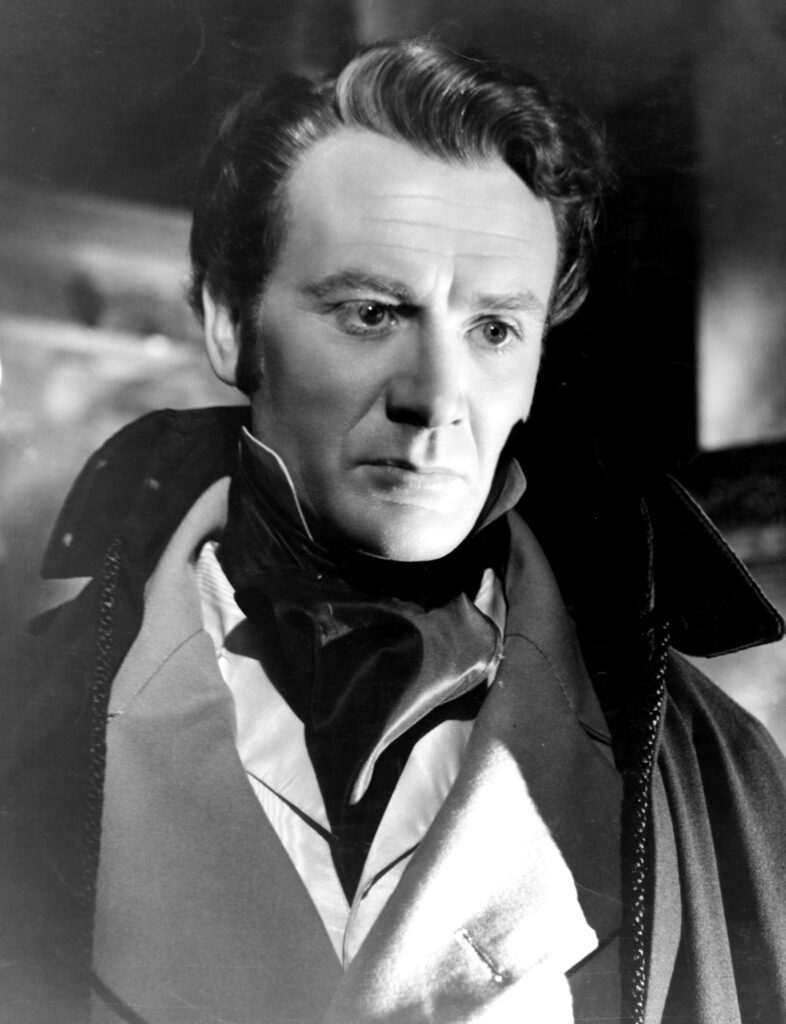
John Mills as Pip
There is, however, one film by which all other subsequent versions must be measured, including the latest. And like most great art, its creation was largely coincidental. David Lean, the director more associated with Dickens than any other, did not much care for reading. He lived and breathed film and had never read anything by Dickens. In the winter of 1939, Lean’s future wife, the actor and screenwriter Kay Walsh, found herself sharing a studio dressing room with the colourful Argentinian-born British actress Marita Hunt, who invited her to see her current play. Lean’s response was ‘Not bloody likely!’ but Kay talked him into it and later recounted how the night went in an interview with Lean’s biographer, Kevin Brownlow:
We sat on little gilt chairs and in five minutes the whole lot of us were spellbound. It was Alec Guinness’ adaptation of Great Expectations, produced by George Devine. Alec Guinness sat on one side of the tiny stage and Merula, his wife, on the other and they narrated. Marius Goring played the grown-up Pip, Yvonne Mitchell played little Estella, Vera Poliakoff the grown-up, Alec played Herbert Pocket and Martita was Miss Havisham. It was absolutely wonderful. And at the end when the audiences left, I took David and the others up to the footlights and introduced them to Martita, who wore a stunning make-up.
Lean would later say of the play, ‘It exerted a tremendous influence.’ For his birthday in 1940, Kay gifted him Dickens’ complete works, which he couldn’t put down.
Lean was at this point still a film editor and had worked on Gabriel Pascal’s Pygmalion and Major Barbara, and Powell & Pressburger’s 49th Parallel and One of Our Aircraft Is Missing. His directorial debut was in collaboration with Noël Coward on In Which We Serve (1942), and he went on to make his name directing successful film versions of Coward’s plays This Happy Breed (1944), Blithe Spirit (1945) and Brief Encounter (1945). In 1944, Lean formed the production company Cineguild with cinematographer Ronald Neame and producer Anthony Havelock-Allan. At the end of the war, Kay suggested that Cineguild should consider a Victorian piece, because audiences had had enough of ‘tin helmets and Oerlikon guns.’ Lean believed that Great Expectations could be a truly great project, as did the formidable film producer/distributor J. Arthur Rank, who basically told them to go and get on with it.
The script, however, proved to be a problem, as is often the case in literary adaptation. The English novelist, playwright, and Dickens scholar Clemence Dane (Winifred Ashton) was approached to write the screenplay but fell into the trap of trying to include every twist and turn of Dickens’ original plot. ‘It had practically every incident in the book,’ Lean later told Brownlow, ‘but done in shorthand so one never got to grips with any one scene. She took snippets of everything and didn’t give anything real weight.’ In short, novels are novels and movies are movies; they are different forms of narrative. Instead, Lean, Neame, and Havelock-Allan wrote the script themselves. It is a masterclass in how to adapt the essence of a complex novel to the screen. Lean later told Brownlow his method:
As I read the book for the umpteenth time, I wrote down in a sort of headline form those scenes, or parts of scenes, which I thought would make a good movie, and I left out anything I thought dull … I ended up with a rough continuity which was full of gaps – Pip on the marshes at the beginning, the graveyard, Magwitch the convict… Then we sat down and tried to link up the episodes and fill in the gaps. That’s how it worked and it worked rather well. What we did, we did proud; if we had a Dickens scene, we gave it full value … You have to cut, and give it weight and do it proud. You have to savour Dickens. You have to enjoy him. You can’t just skip through in shorthand. This is why George Cukor’s David Copperfield is still a good picture.
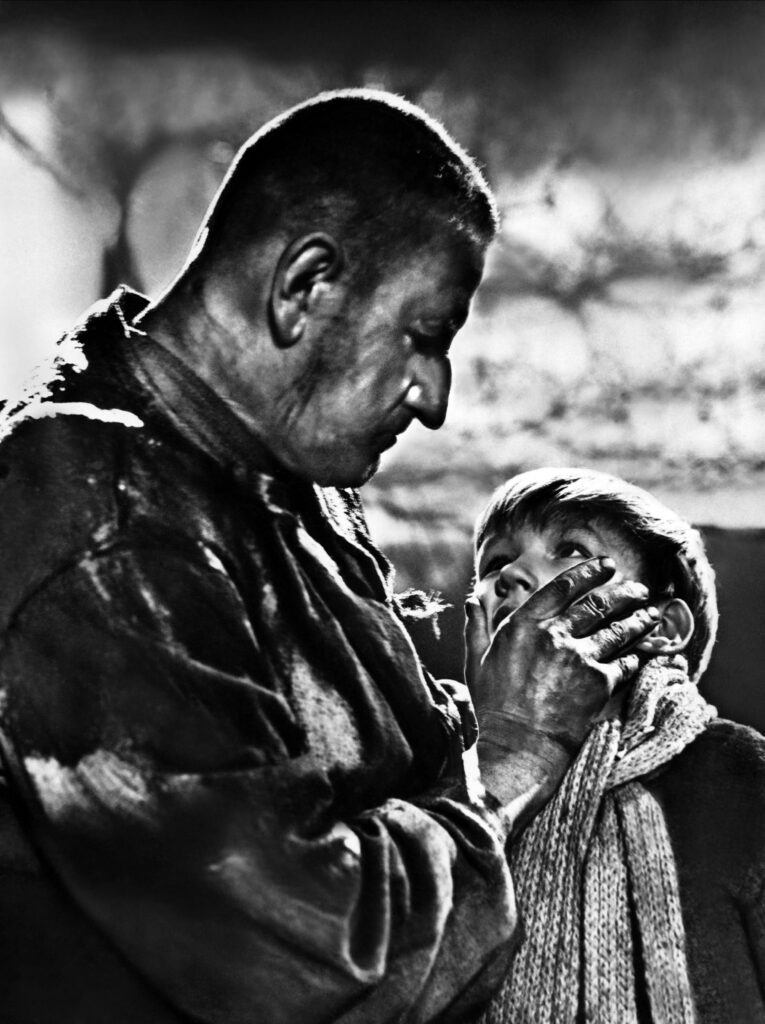
Finlay Currie as Magwich and Anthony Wager as the young Pip
Purists be warned, but this is how you do it. Longer TV serials allow more space to engage with the original plot points, but even then, many will still need to be cut, conflated, or rewritten. Lean’s Great Expectations therefore keeps to Pip’s primary through line in a more compressed period of time than the novel. Gone is Dolge Orlick and the murder of Mrs Joe, Wopsle and his acting ambitions, Matthew Pocket, Mr and Mrs Hubble, Startop, Miss Skiffins, and Clara Barley. Miss Havisham’s relatives are reduced to a single glimpse, while Mr Pumblechook appears in only two short linking scenes. Wemmick survives the cut, though his castle is excised, and the ‘Aged P’ reduced to a single scene. Magwitch’s mortal enemy, Compeyson, remains but unnamed and without the backstory in which he is revealed to be the conman who left Miss Havisham at the altar. Pip doesn’t go to propose to Biddy, and he and Herbert no longer work in Egypt for eleven years. Drummle does not die but simply divorces Estella offscreen upon hearing of her birth parents. Finally, Kay Walsh contributed a more emphatic, symbolic, and happy ending in which there’s no doubt that Pip and Estella have freed themselves of the baleful influence of Miss Havisham’s ghost and can now marry with the closing line, ‘We belong to each other, let’s start again together.’ John Mills’ Pip tearing down the ancient drapes to let in the sun foreshadows Peter Cushing’s Van Helsing at the climax of Hammer’s Dracula, though Lean was thinking of Citizen Kane. This ending is significant for future adaptations as Dickens could never really settle on a resolution himself. He wrote two distinct final scenes, one in which Pip and Estella meet in London years after the main events of the novel, talk amiably and then go their separate ways, and another in which they meet again on the grounds of what was once Satis House, with an enigmatic closing line which might suggest they get together:
I took her hand in mine, and we went out of the ruined place; and, as the morning mists had risen long ago when I first left the forge, so, the evening mists were rising now, and in all the broad expanse of tranquil light they showed to me, I saw no shadow of another parting from her.
Dickens wrote this happier ending on the advice of fellow novelist Edward Bulwer Lytton and published it over the original, although the possibility that Pip and Estella could marry seems at odds with the message of the book and the characters themselves. Subsequent adaptations of Great Expectations have sometimes reinstated character arcs such as Orlick’s and Wopsle’s, but the 1946 script and its conclusion is essentially the one they follow. From his approach to A Christmas Carol, it is likely that Knight will be the first screenwriter to break this chain and do something genuinely different while retaining the original premise.
The next piece of the puzzle that Lean instinctively understood about filming Dickens was that his character creation required equally inspired casting. Colourful characters demanded colourful actors. Lean was delighted to get Francis L. Sullivan for Jaggers. Sullivan, with his great jowls, rumbling voice, and permanent air of exasperation could have walked straight out of the pages of Dickens, and he went on to memorably play the Beadle in Lean’s next film, Oliver Twist, defining the role for generations just as Martita Hunt did Miss Havisham, reprising her role from Guinness’ play. ‘Thank god,’ reflected Lean many years later. ‘That part could so easily descend into a kind of farce. She was another outsize character.’ Bernard Miles’ strong ‘Over the Gate’ accent was perfect for the bucolic Joe Gargery opposite flinty Freda Jackson’s ‘rampageous’ Mrs. Joe. Heavyweight Scottish character actor Finlay Currie – a great, craggy bear of a man who Lean had worked with on 49th Parallel – played Magwitch, the whistling winter wind of the film’s atmospheric opening a leitmotif heralding each of his major scenes: his first appearance in the graveyard, his unexpected arrival at Pip’s rooms, and his failed attempt to escape by boat.
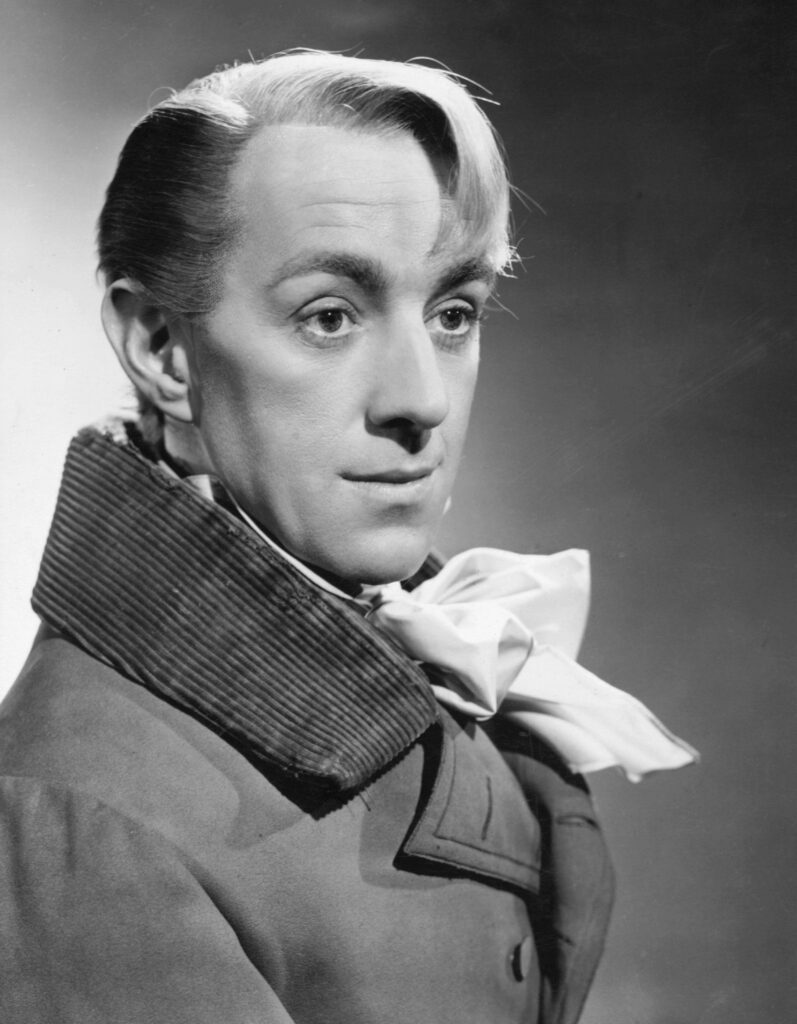
Alec Guinness as Herbert Pocket
Lean was in no doubt that Alec Guinness should recreate his stage performance as Herbert Pocket, though the young actor was initially less than convinced. Already established in the theatre, Guinness had worked only once in front of a camera, as an extra in the Gaumont musical Evensong (1934), an experience he loathed, swearing never to do another film. He was also more nervous than he let on, but found Lean’s directorial style gave him enough support alongside the freedom to find his way to the best performance. ‘He didn’t tell one how to perform,’ he told Brownlow. ‘He just knew when something was not quite catching. He didn’t know how to put anything right; he just knew what wasn’t right.’ Valerie Hobson, meanwhile, who played the adult Estella, hated this approach, later telling Brownlow, ‘He gave me nothing at all as an actress.’ This may be a problem with the role itself (which is what Hobson believed, describing the character as ‘thinly written’), as the Ice Queen Estella had to be, in Lean’s words, ‘someone without any heart or feeling at all.’ The more zombie-like Hobson’s performance, the happier he was, the more miserable the actress. Hobson was already an accomplished screen actress – she’s Elizabeth to Colin Clive’s Henry in Bride of Frankenstein – and was also married to Cineguild partner and script co-writer Anthony Havelock-Allan, but her Estella is perhaps the one major casting choice that doesn’t quite work, though in a clever move she also plays Estella’s mother, Molly. She is also rather eclipsed by 17-year-old Jean Simmons’ mesmerising performance as Young Estella, who manages to breathe more life into this complex character than Hobson while retaining the frosty aloofness. Simmons, a protogée of Gabriel Pascal and one of J. Arthur Rank’s ‘well-spoken young starlets’, had had a few minor film roles, but, like Guinness, Great Expectations made her a star and she went on to have a distinguished career in Hollywood. Anthony Wager, the son of a plumber, bought working class authenticity to ‘Young Pip’, who grows into John Mills, whose earnest and haunted World War II sensibility – audiences would have associated him with guileless soldiers and seamen from movies like In Which We Serve, This Happy Breed, and The Way to the Stars – is perfect for the young Victorian protagonist who is well out of his depth.
The other factor that makes Lean’s Great Expectations a masterpiece is its striking visual style. It manages to be at once gothic and expressionistic but also brutally realistic in its depictions of Victorian wealth and poverty. Lean had been impressed by the cinematography of Michael Curtiz’s Casablanca, which used long focused lenses to sharpen faces while softening backgrounds, creating a heightened sense of intimacy. His production designer, John Bryan, feared this technique would render his sets too vague and started using forced perspective, lowering ceilings, and distorting furniture and buildings intended to be shot from low angles. Trees almost had faces and creaked like a man hanging from the gallows, while naval smoke cannisters created fog so thick it affected shipping in the Thames Estuary. Lean then used wide lenses to shoot the scenes when the protagonists are children, making sets seem vast, shadowy, and cavernous, and longer lenses for the adult scenes, the same sets becoming dreary and run-down, smaller somehow, the way places we remember from childhood often feel so much more ordinary when revisited as adults. Forced perspective belongs to German Expressionism, striking examples being Robert Weine’s The Cabinet of Dr. Caligari and F.W. Murnau’s Nosferatu, while Orson Welles had used it more recently in Citizen Kane. Lean and Bryan were also inspired by the dark and grotesque illustrations of Dickens’ frequent collaborator George Cruikshank, although he had not, in fact, worked on Great Expectations, which was illustrated by his friend Frederick Pailthorpe. Bryan’s ‘look’ was so effective that Lean gave him free reign, abandoning the Casablanca plan in favour of something much more stylised and exaggerated.
As with casting the film, Lean understood Dickens and how to film him. ‘What we were trying to do,’ he said in an interview published in The Cinema not long after the film’s release, ‘was to create that larger than life picture which is really most characteristic of Dickens’ kind of writing.’ This was because, ‘If we hadn’t done this, we should have been faced with quite a different problem – making the audience accept what is really a pretty exaggerated piece of melodrama.’ Expressionism attempts to render the inner processes of the mind externally, which is how Lean read Dickens: ‘Dickens wrote as if he were inside the boy himself. We tried to make the audience share Pip’s fear … From then on, we made everything larger than life, as if in a boy’s imagination.’ When Lean saw the film in the cinema and the entire audience jumped when Pip first sees Magwitch, he knew he had nailed it. John Bryan (Art Direction) and Wilfred Shingleton (Set Direction) would go on to win the Academy Award for Best Art Direction in a black-and-white picture, while Guy Green picked up the Oscar for Cinematography. (Great Expectations was also nominated for Best Screenplay, Best Picture, and Best Director.) Green had replaced Robert Krasker, who had photographed Brief Encounter but whose work on Great Expectations was considered by Lean, after much soul-searching, to be too ‘polite’. ‘If you’re going to do Dickens,’ Lean explained, ‘you have to have very strong photography, black shadows and brilliant highlights.’ This, Guy Green understood, playing dark against light, and experimenting with contrast. ‘It was a bit like painting,’ he later said, ‘except that you start with a black piece of paper instead of white.’ Bob Krasker went on to photograph Carol Reed’s The Third Man, winning the Oscar.
The intensity of the film meant that Lean had a battle on his hands with the British Board of Film Censors, although it was eventually passed with only one minor cut to the death sentence scene. The opening graveyard scene and the death of Miss Havisham were considered too scary for young children however, and the film received an ‘A’ certificate meaning kids had to be accompanied by adults. Great Expectations had cost the then vast sum of £392,568 to make, more than most Technicolour films, but it was a critical and commercial triumph, leading fellow director Carol Reed to quip to Lean, ‘Why don’t you fall under a bus!’ In a Daily Express review headlined ‘Britain makes her greatest film’, Stephen Watts wrote:
There is only one way to succeed in making a film of a classic, and that is to make a film which is in itself a classic … Here is a picture which is British to the backbone, yet belongs proudly to the cinema of the world. For beauty, good taste and intelligence, for dramatic and emotional content and expert polish in every department, it is beyond nationality. In brief, a classic.
Richard Winnington of the News Chronicle agreed, writing that, ‘Dickens has never before been rendered effectively into cinema terms: now the acceptable adjustment between the realism of the camera and Dickens’ robustious enlargement of character is here made.’ Cinemagoers queued around the block to see it.
Critics and audiences alike knew what Lean had achieved in Great Expectations, and along with its companion, Oliver Twist, which followed in 1948, Lean created the Gold Standard for filming Dickens. Regardless of the sophistication of modern film and television, anyone attempting to bring Dickens to the screen must first study the work of David Lean. As Dickens’ granddaughter Monica said of the film, ‘It is a wonderful picture. I enjoyed every moment of it,’ adding, finally, the greatest praise of all: ‘Grandfather would have loved it.’
Main image: Martita Hunt and Jean Simmons in David Lean’s 1946 film of Great Expectations. Credit: Allstar Picture Library Limited. / Alamy Stock Photo
Image 1 above: John Mills as Pip. Credit: Rank / Alamy Stock Photo
Image 2 above: Finlay Currie as Magwich and Anthony Wager as the young Pip. Credit: Allstar Picture Library Limited. / Alamy Stock Photo
Image 3 above: Alec Guinness as Herbert Pocket Credit: Rank / Alamy Stock Photo
Books associated with this article
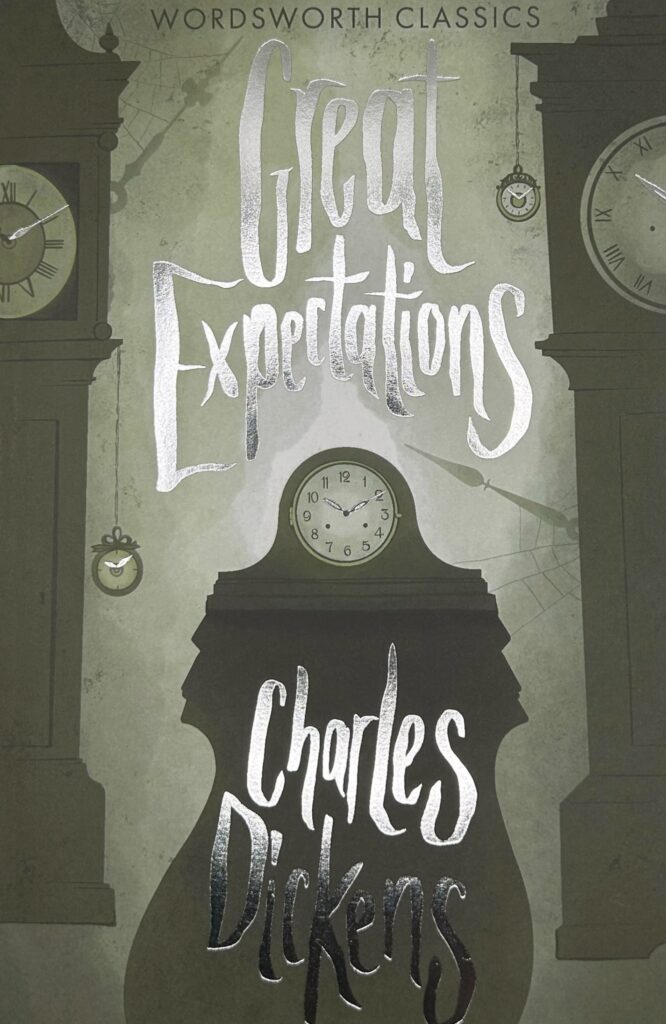
Great Expectations
Charles Dickens
